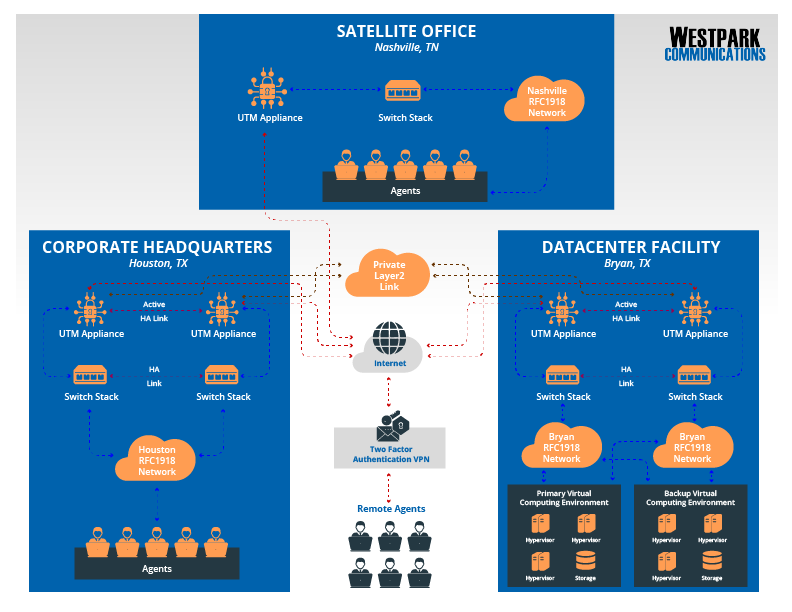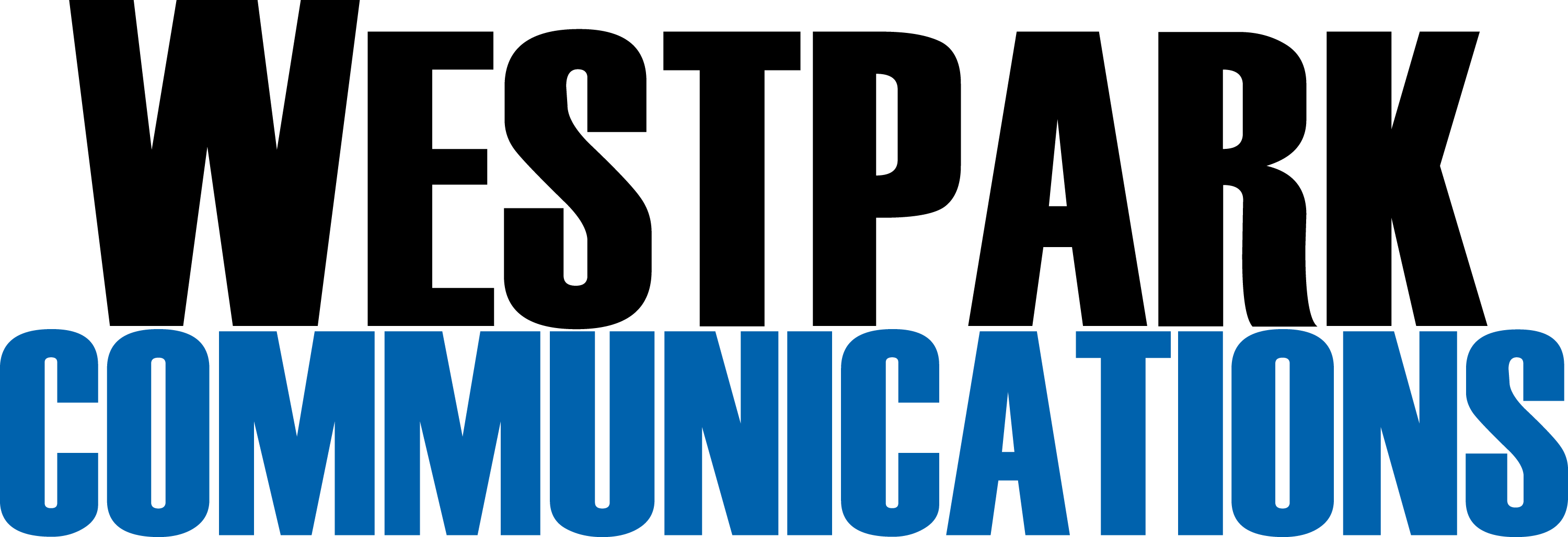
In the aftermath of Hurricane Harvey and Hurricane Irma wreaking havoc on Texas and Florida, many businesses had their disaster recovery and business continuity plans put to the test. Westpark Communications was no exception to this but with careful planning, robust technology, and an incredibly dedicated staff we were able to maintain 100% availability during and after the historic flooding that occurred in Houston.
Planning
When disaster looms Westpark Communications has defined internal processes that allow us to efficiently prepare for the worst. As a result, when tropical storm Harvey was dumping trillions of gallons of water on southeast Texas we were able to keep in contact with our staff members to ensure they were not in need of rescue or to assist them if needed, and we were able to continue serving our clients despite flooding, power outages, and Internet outages throughout the greater Houston area.
Here are the crucial planning procedures that allow for successful disaster planning:
Employee Briefing Plan
Westpark Communications briefs employees on planned office closures, special schedules and schedule changes, and any evacuation guidelines or procedures that need to be followed.
Designated Points of Contact
A designated point of contact for all employees is identified, and this information is relayed to all employees. Typically, the call center agents’ point of contact will be their direct supervisor. We also made sure to verify all employees contact information in order to check on them.

Equipping Staff for Remote Access
Westpark Communications make sure to have enough “Remote Agent Technology Packages” for each operational staff member. This package includes:
- A laptop
- A headset
- A mobile hotspot
- Secure Two Factor Authentication VPN connection
- A battery Pack
Technology
The modern call center is heavily dependent on technology and is often molded around specialized hardware and software. Modern call centers are also heavily reliant on a robust network infrastructure. Westpark Communications’ business continuity is heavily dependent on technology so over our many years of operation we have continually invested in creating a fully redundant technology infrastructure with minimal single points of failure. You can expect rock solid uptime and crystal clear call quality thanks to our robust technology infrastructure!
Westpark Communications Utilizes a Tier IV Data Center Facility
Westpark Communications’ core business information systems, including our call center systems, reside in a hardened tier IV data center facility located 150 miles inland. This tier IV data center offers quite a lot, including:
- An unheard of guaranteed 100% uptime service level
- Triple-redundant power feeds from the local utility provider
- Triple-redundant UPS battery backups
- Triple-redundant diesel backup generators
- Redundant cooling
- HFC 125 fire suppression
- Direct peering with five of the world’s nine tier I Internet service providers
All of this translates into extreme reliability and consistent performance for Westpark Communications and our clients.
Westpark Communications Connects to Multiple Redundant Internet Service Providers
Westpark Communications has deployed a robust network infrastructure with redundancy throughout. With our most recent connectivity upgrade in July 2015 Westpark Communications is connected by dedicated fiber links from multiple tier 1 and tier 2 Internet service providers, ensuring that Westpark Communications always has connectivity. In our redundancy tests we experienced an 8 second failover time to the backup VPN tunnel connectivity in the event our primary virtual private fiber circuit experiences an outage with immediate, seamless fallback to the primary dedicated fiber circuit when service is restored.
Westpark Communications Has Implemented Redundant Network Equipment
Our data center network infrastructure includes redundant UTM appliances and redundant network switching. This equipment has been configured and tested to provide the least amount of downtime possible during a failure scenario. In our tests we experienced a 30-40 second failover time in the event of a UTM appliance failure, and a 30 second or less failover time in the event of a network switch failure.
The resulting network infrastructure design is demonstrated in this illustration:

With this level of redundancy and these quick failover capabilities we can ensure that our availability is among the best in the industry.
Update 3/2018: We now have a second secure inland location in Nashville, Tennessee. Check out our 50th Anniversary documentary to learn more.
Westpark Communications Utilizes Voice Oriented Network Configuration
Westpark Communications utilizes voice over IP, also known as VoIP, to facilitate call center agent communication with our clients. VoIP is a realtime protocol, meaning that the data is transmitted as soon as it is received with very little buffer to deal with network issues, so VoIP is sensitive to data packet loss and ‘jitter’, which is variance in the arrival time of data packets. Westpark Communications has implemented standards based “Quality of Service” to identify and prioritize VoIP data packets throughout our network, ensuring our clients’ callers experience crystal clear call quality.
Westpark Communications Connects to Multiple Telephony Service Providers
Westpark Communications connects to four major telephony service providers, with our primary telephony services provider’s backbone network located in the same data center facility as our call center environment! Telephony service provider redundancy is just as important as Internet service provider redundancy as your calls are important to us.
Westpark Communications Employs Highly Available Telephony Hardware
Our core telephony switch has redundant components throughout. From telephone service provider connectivity to agent connectivity and processing our clients’ calls, Westpark Communications call center can operate with up to half of the core telephony switch in an offline state with limited functionality. Westpark Communications also keeps cold spare telephony switch components available on site for quick deployment. This enables Westpark Communications to continually serve our clients even in the event of a partial equipment failure.
Westpark Communications Utilizes Multiple Highly Available Virtual Computing Environments
Using the latest virtualization technologies, Westpark Communications is able to offer unparalleled uptime and reliability for our clients. Multiple virtual hosts combined with a fully redundant shared storage area network, also known as a SAN, allow Westpark Communications Information Technology Staff to migrate virtual servers between hosts with no downtime, quickly deploy new servers to meet customer needs, and quickly reboot any malfunctioning servers. Westpark Communications also operates a completely separate virtual server stack with multiple virtual hosts that stores a full replica of every virtual server, allowing Westpark Communications to immediately start virtual servers from the previous night’s replication in the event of a catastrophic SAN storage failure.
Make Westpark Communications a part of your disaster recovery and business continuity plan.

